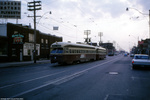DB9
New Member
Decentralization initiate in the 80s/90s were on track until amalgamation derailed the efforts and refocused developments downtown. Hense why we have what currently is NYCC and STC. If the efforts were continued and the Sheppard line was completed to the STC
and Sheppard West, our landscape today would be vastly different.
Since amalgamation, go transit improvements, better subway signaling, steercar priority are all focused on getting people downtown. Eglinton was the first project that’s focused on getting people to the inner suburban business areas to work.
With regards to downtown investments, with 500 meter subway stops, I don’t see how it can get better than what it is given our realities.
The Scarborough subway extension is still in the drawing board and its effect will be felt 20 years out. But even this is only an upgrade to an already existing transit line.
What the inner burbs need is a completed network of transit.
With Eglinton being completed, we need to complete the DRL long and Sheppard East extension before businesses will be attracted to locate out side of the core. And the move outward will happen because nobody will pay $40/SF for rent in the core for rent if they can pay $10 out side.
This seems to be wishful thinking at best. Let's take for example Queens and Bronx NYC, which would be analogous to Scarborough. Their transit coverage is pretty decent, and yet - there aren't a lot of banks or Fortune 500 companies (with their high-paying professional jobs) decamping their offices from Manhattan to Queens or the Bronx..and Manhattan rent is "sky-high". Manhattan is booming as much as ever. The Western parts of Brooklyn are experiencing a renaissance in terms of commercial activity, but a lot of that is linked to its proximity to Manhattan (i.e. right across the East River)..






